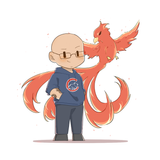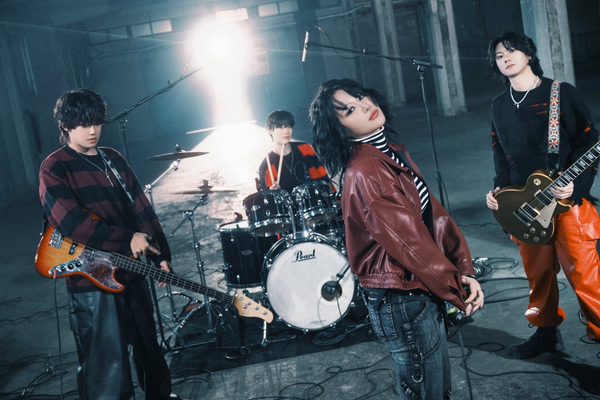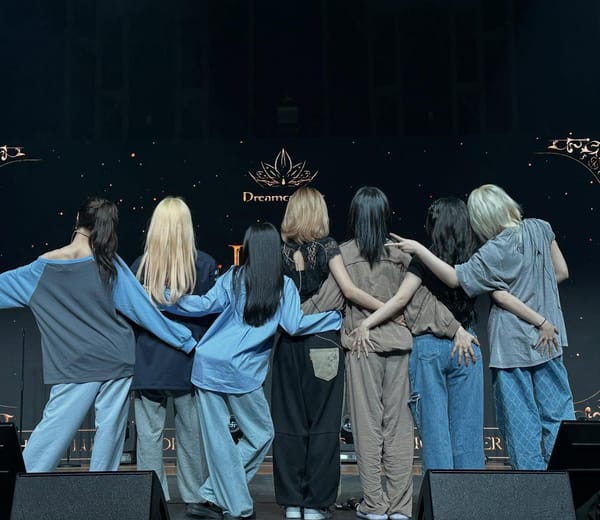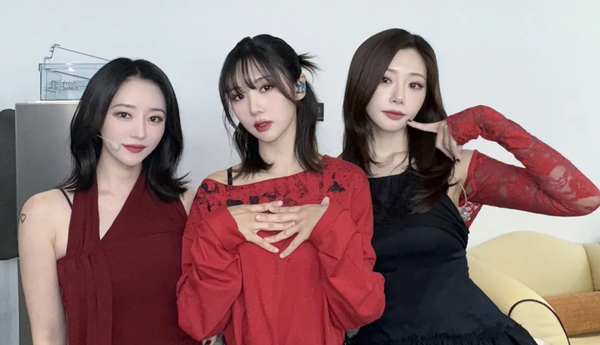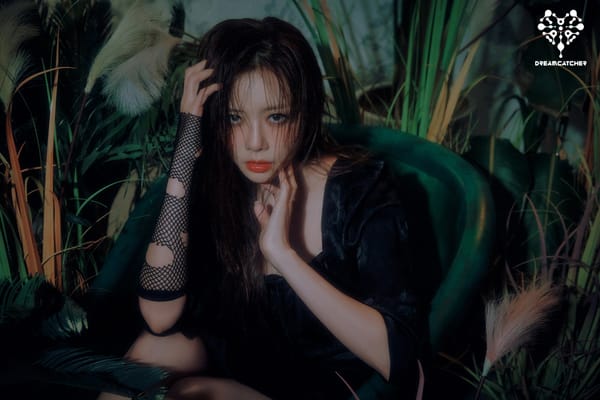A First-Time K-Pop Concertgoer's Guide (Featuring Dreamcatcher)
If you're new to K-Pop concerts, here's some info and tips, using one of 3rd generation's most-traveled groups as a sample artist.
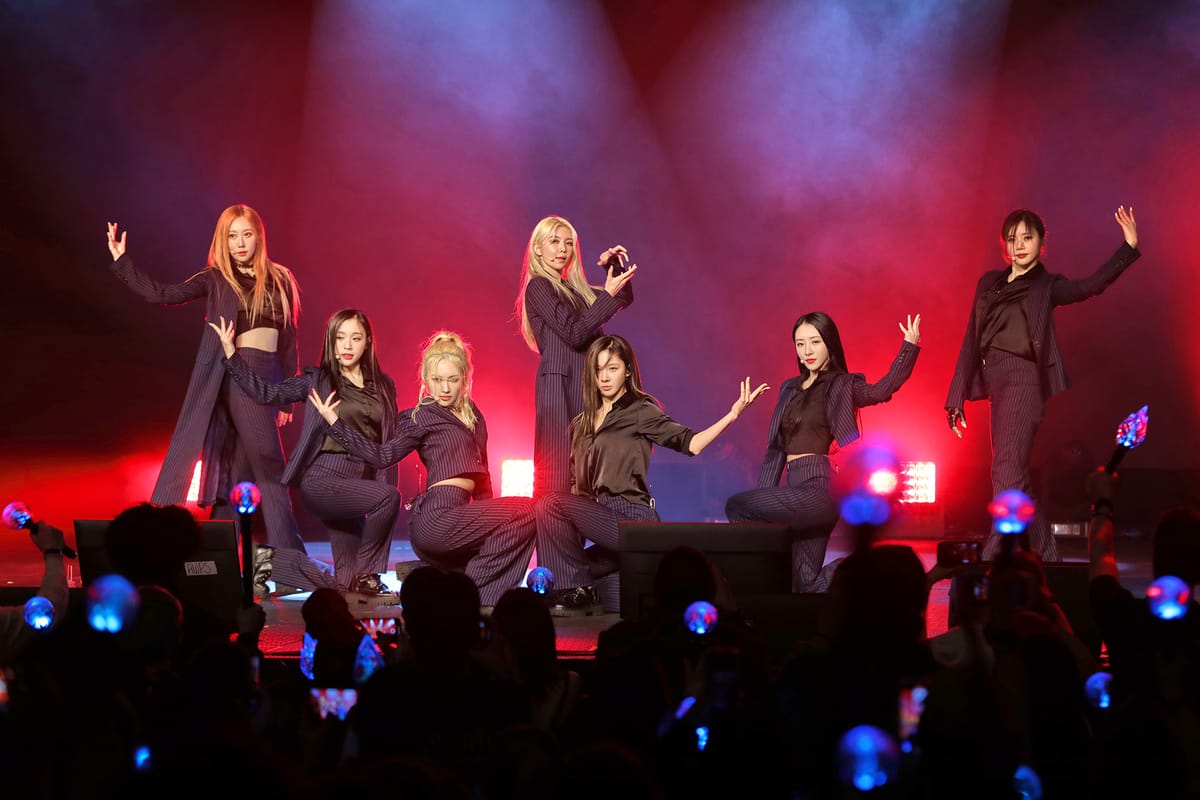
For a long time, concerts have been a part of my leisure-time life. Whether it's attending them in a small, tightly-packed bar or a sports arena, or working and planning them for events, they've brought me a lot of enjoyment.
Despite those years, when I began attending K-Pop concerts starting in 2019 and saw my favorite group, Dreamcatcher, for the first time, I had no idea of their unique presentation. Made as a touring group, Dreamcatcher offered me a blend of the rock concert vibe that I was used to while giving me something distinctly K-Pop.
With roughly 89 shows spanning 11 tours across most regions of the globe, and (as of this writing) a 12th on the horizon in Europe, Dreamcatcher is one of, if not the most-traveled K-Pop group of their generation. As such, they're a great sample artist to use to put together a guide for those of you who are attending a K-Pop concert for the first time.
Navigation

Practical Stuff
There are quite a few guides about what to bring to concerts, many of them valid. Generally, you should always watch for a tweet or post about what is prohibited, and check local venue policy for additional info. For the purposes of K-Pop concerts, I'll highlight a few key items:
- Earplugs - These are practical, and not just to shield your ears from fans screaming by them. You can opt for standard earplugs that are disposable but if you're willing to spend a bit more, I'd get earplugs that filter out bad decibels.
- Bottled Water - Venues commonly won't allow outside water inside, but if you are waiting in line or are out and about, keep yourself hydrated and ditch the bottle before you go in. Once in the venue, buy more if you can. Most concert venues heat up, so minimizing the chance of fainting or other incidents due to lack of water is always a good idea.
- Tissues/Wipes - Multiple uses, from wiping away sweat, to cleaning stains, to being ready to potentially wipe away tears during one of Dreamcatcher's more emotional ballads, it's just a good idea to have these in travel size. I prefer Wet Ones as they have the right combination of hypoallergenic treatment, longevity, and small size.
- Lightstick/Group Apparel - Nice-to-have though not strictly required, lightsticks, which are unique by group and designed appropriately, are part of many visually cool K-Pop concert experiences. Aside from being extendible via attachments and having two unique heads, Dreamcatcher's has functionality that allows the production engineer to take control to sync the lights for a beat drop like the one in "Silent Night" above. Additionally, some fans opt to wear the group's official robe, or even cosplay in an artist's performance outfits. Either way, if you bring something like a lightstick, have a way to easily attach it to a belt or carry it hands-free if needed. For outfits, make them easy to take off and on in layers if needed.
- Foldable/disposable or clear bag - You'll have to check the venue policy for allowed dimensions for bag size, but a small-to-medium bag, preferably clear and collapsible, has a bunch of uses. It can hold other practical items, merchandise bought at the venue, freebies or banners that other fans give away, and more. This clear tote bag or smaller backpack works.
- Portable charger - Some venues might not allow them, but for those that do, this is a necessity. Phones or other devices you're using throughout a busy concert day can run out of charge, especially if used heavily during the show. Portable chargers like this Anker Portable fit into small bags easily and can be used in a pinch without being bulky.
- Tickets (physical as well as digital if possible) - Yes, this might seem obvious, but you'd be surprised at how many times someone didn't bring the aforementioned charger and thus have no way of bringing up their tickets in the app. Print a physical copy as a backup if you can - most venues are modern and work off of apps but it pays to be prepared just in case.
The K-Pop Concert Experience
If you've attended a regular concert before, some of this might seem to be a bit of a re-tread, but even so, you may find some unique elements that make up a K-Pop concert. Here's what to expect.
Lining Up/Queuing
- If you're attending a venue with seats and you have a seated ticket, it's straightforward. Line up whenever you want (unless you have to check in for a Meet & Greet or another event or want to get to sold merchandise early), and eventually, you'll get to your assigned seat. All good.
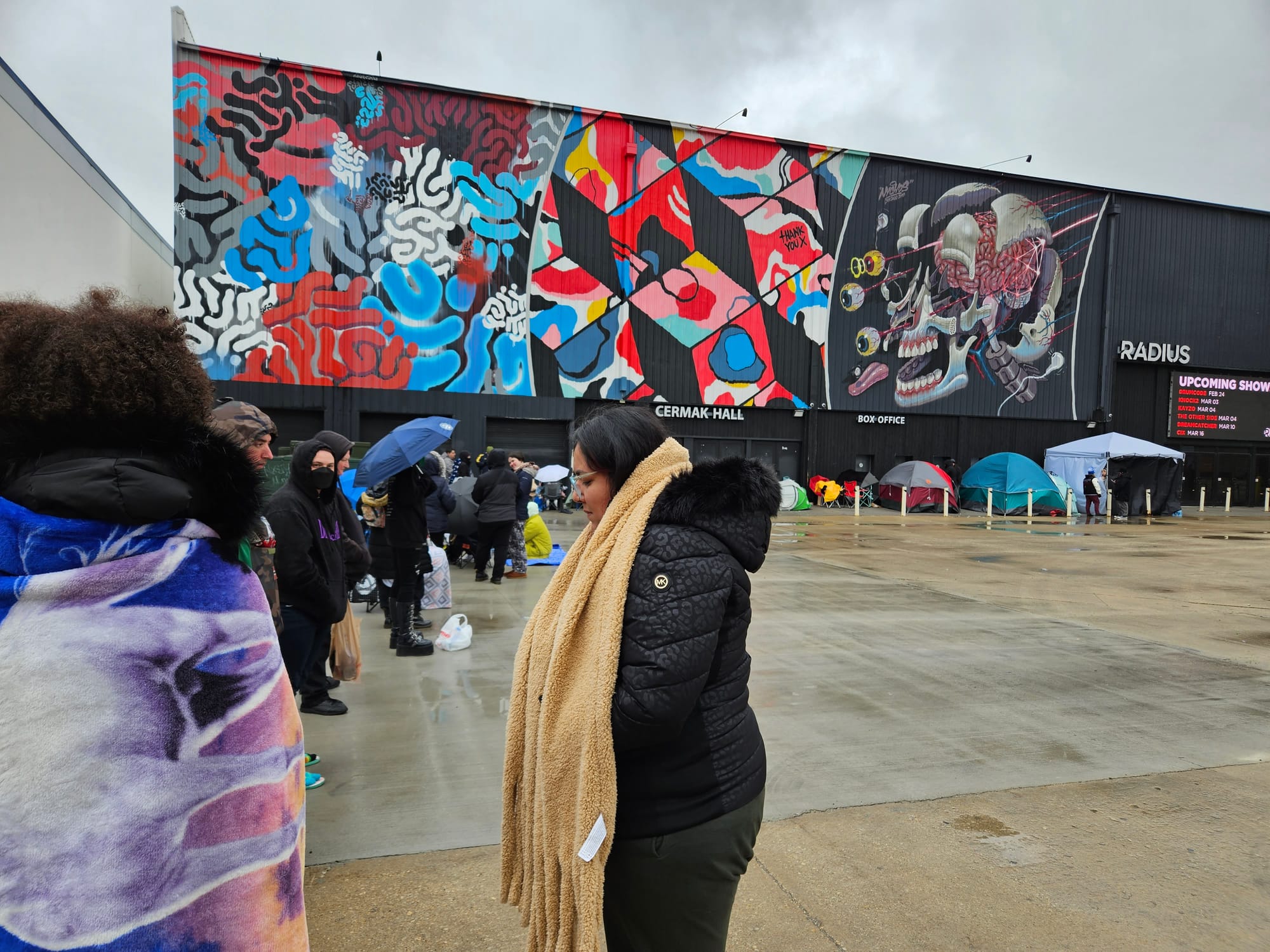
- If you're attending a venue with standing or "general admission", things are a bit different. The time you line up and the order in which you get into the venue when doors open may dictate where you get to stand. People ask all the time when to line up and as an old concert veteran, I can only say it depends on how badly you want to be up front. Like Western concerts, K-Pop fans in standing areas tend to show up in the early morning, though as Dreamcatcher's tours show, the later the stops get and the more people see the up-close-and-personal fancams from lucky fans, the earlier people tend to show - I've heard of as early as 2 days before a show date. Fan groups have attempted to create unofficial queuing or numbering systems to combat this, but unless authorized by the venue, I wouldn't count on them entirely. It's a bit of an arms race, and whether or not you participate depends on your preferences. Plan accordingly - and prioritize your health above all else.
[🐰🌊🐼 Europe Tour Support]
— Ocean Love. 🐰🌊🐼 (@OceanLove1707) November 11, 2022
Hi!
Ocean Love will be giving out freebies at all the stops during the Europe tour!
(Berlin, Tilburg, Warsaw, London, Paris)
Locations will be posted the day of the concerts.
Thank you 🫶🏻#JIU #지유 #DAMI #다미 #Dreamcatcher #드림캐쳐 pic.twitter.com/26IxY4F3hM
- K-Pop fans often have "freebies" for fellow fans. This can take the form of official or fanmade photocards, spare inclusions from albums, and more. These are usually meant to be fun shared items to commemorate the experience and as a way to start up conversations. You're by no means obligated to take them but if you don't, passing them on to others or trading for favorite members works, too.
🌱Apocalypse : Save Us in SF Ocean Project
— ˏˋ⋆C&D⋆ˊˎ (@shopmoondew) July 6, 2022
Along with some freebies, we have also organized a ocean for the San Francisco stop of DCs tour!
We hope you can participate in the project! 💚
Details below 🙏 #DREAMCATCHERinSF#드림캐쳐 #Dreamcatcher #2nd_WorldTour#Apocalypse pic.twitter.com/WS58xdYQwP
- You may also get wind of fan projects or initiatives. Usually, these will be group participation efforts that involve doing something during the show, like holding up a pre-printed fan banner with a nice message, turning your lightsticks a certain color, or something else that the K-Pop artist will notice and appreciate. Again, it's optional to participate, but if you want to, it should be easy to track down an organizer.
The Concert
- Typically there are no "openers" for a K-Pop show featuring an artist/group. They're the only act that performs.
- An average K-Pop concert is two to two and a half hours, including the encore.
- Groups, unless they are larger, more famous acts, will not travel with a band. Soloists might, depending on the size and style of music. Either may or may not travel with their backup dancers - again, dependent on size.
- Setlists will typically contain selected elements from the K-Pop act's discography. Newer acts with less original music may fill the set with covers or subunit stages, like above. The most recent Dreamcatcher tour setlist contained 20 songs.
- Some things you can expect to see during K-Pop concerts include:
- Ments - slang taken from the English words "comment", "statement", etc., this refers to speaking breaks inbetween groups of songs. This allows the K-Pop act to take a break from intense choreography and vocals, address and interact with the audience, and/or do fun activities, such as dance challenges or giveaways, as Dreamcatcher did above with signed ping pong balls. Because this usually involves real-time translation and the need for the artist to hear clearly, it is very important to show respect by not shouting or screaming over the K-Pop artist or translator talking. It's understandable to be excited, but unless you're being asked to do something or it's an appropriate time to react, keep your energy in reserve so the artists get a chance to talk.
- VCRs - No, not video cassette recorders (though if you recognize the acronym, you're dating yourself), but a general term for anything pre-recorded. These can be short video shoots, funny skits, or other bits of media. They're meant to kill time for costume changes and short breaks, though Dreamcatcher has, in the past, simply stayed on stage the whole show with no VCRs. Some acts, like MAMAMOO, tend to fit a whole variety segment into their VCRs, to fans' delight.
- Small Interactions - for non-choreographed songs, you can expect that a K-Pop act will wander the stage while performing, and doing small things such as waving, or catching fans filming them and doing something fun. Group acts tend to also have fun interacting with each other to create memorable pictures or videos. The point is to make the experience dynamic and show appreciation to fans attending.
- Fanchants - K-Pop songs that serve as the title tracks for an artist's releases will oftentimes have a fanchant which prompts the audience to cheer with a certain phrase or phrases at different musical gaps in the song. It's not strictly necessary to participate, especially as fanchants are often in Korean and can serve as an obvious language barrier, but if you're able to learn and do them, they often add to the atmosphere of the show.
Meet & Greets, VIP, and Other Side Events
K-Pop acts may sell side events such as a Meet & Greet, separately from the concert ticket, and/or VIP benefits. What form they can take can vary depending on the artist's relative popularity and logistics, but some possible items are:
- Soundcheck or Send-off - fans will attend a short pre-show event where audio will be checked for the artist with small interactions. This usually takes the form of one or two songs being performed. A Send-off is essentially the opposite, a post-show event where fans will get to see the K-Pop artist as they leave from the venue.
- Hi-Wave or Hi-Touch - a Hi-Wave is what it says - a very short walk past the artist while waving to them. A Hi-Touch is a slightly longer experience of a few seconds per member where you will give the K-Pop artist a hi-five and interact briefly. Both events go quite quickly, so short, simple phrases (Korean or English) are typically best.
- Photos (Individual or Group) - Smaller K-Pop acts may do 1-to-1 photos with fans, while more popular acts may do a group photo with the artist with a few people at a time. Small interactions or conversations are possible but as with Hi-Wave or Hi-Touch, are usually a few seconds in duration while the photo is being taken.
- Fansign or Panel - Less common, especially with more popular groups, but a fansign with album purchases as entry (with winners chosen at random) or a buy-in to a separate discussion panel events are possible. Panels have some scripted content but may allow for Q&As, while a fansign operates like one in South Korea - the artist will talk to the fans, fans go down the line for about a minute with questions and get albums signed, and repeat for multiple members if the artist is a group.
Meet & Greet/VIP/Side Event packages will also usually come with some form of exclusive merchandise. The upcoming February - March 2024 EU tour for Dreamcatcher includes a mini poster, 4-cut photo set, exclusive photocards and a zipper bag. Benefits may also include early entry or premium location for seating.
Tips
Finally, some K-Pop concert-specific tips:
- Make friends or go with others if you can - K-Pop concerts often double as impromptu community fan meets, especially if you're in line for hours at a time. If you can go with friends or make a few new ones through pleasant, respectful conversation, do so, as others can hold your place if you need to do something, watch each other's back in case of some unplanned chaos, or otherwise have someone else to share the experience with. If you're solo and have difficulties with this, that's understandable too. In this case, either seek an online community that eases IRL interaction (a K-Pop act's Discord or Reddit work) or at minimum, stay up-to-date with info so you know what might change.
- Respect each other as well as the artist - K-Pop concerts can get pretty high energy and intense. While above all the artist deserves respect, do the same for your fellow concertgoers too. Be aware of your surroundings, help those having trouble seeing, and otherwise assist in making those around you have as good of an experience as you intend to have.
- KISS for your favorite K-Pop artist interactions - No, that's not a cue to pucker up, but the age-old acronym of Keep It Simple, Stupid. Whether during the show or in a Meet & Greet, you'll likely only have a few fleeting seconds. Make those count with something straightforward like a simple heart or thank you. If you want to go the extra mile with some Korean, practice early and often and stick to the basics (thank you, good job, we love you, etc.). They'll appreciate it as long as it's coming from the heart. Some artists are more comfortable with English - find out who they are to save some time.
- Don't expect anything beyond the event - questions often come up about giving gifts, getting signatures, or taking selfies and the answer is likely no for all those or anything outside of what's been planned. If the K-Pop artist initiates something, go with the flow but otherwise remember that any extra thing you want is a delay for the next person looking to get their time with them. And, of course, it's just not appropriate to seek them outside of their public scheduled appearances. K-Pop artists typically work busy tour schedules, and every off-work moment should be theirs to do with as they please.
Hopefully, this guide helps you get ready for your first K-Pop concert - especially if it's for Dreamcatcher, who are, in my very biased opinion, some of the best performers live with years of experience. If you're prepared, respectful, and as informed as possible, you'll make what will no doubt be a memorable event for you and your favorite K-Pop artists.
Affiliate Stuff
(For transparency: I receive a cut of all purchases through these links and partnerships I’m a part of - feel free to check them out!)
